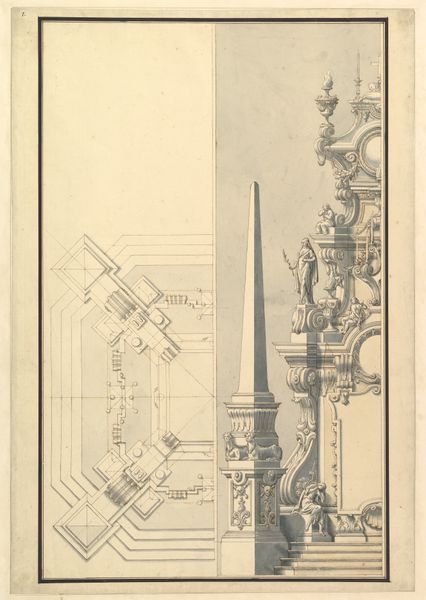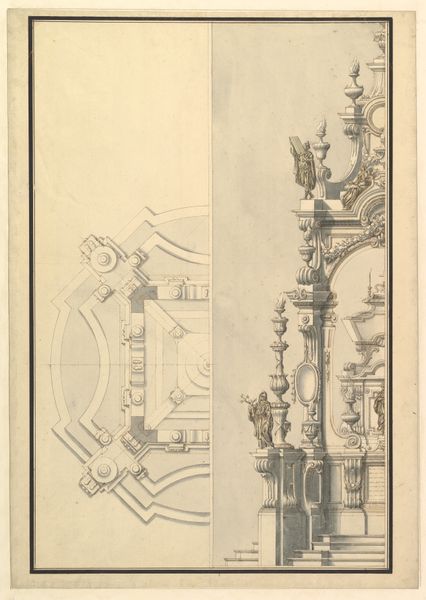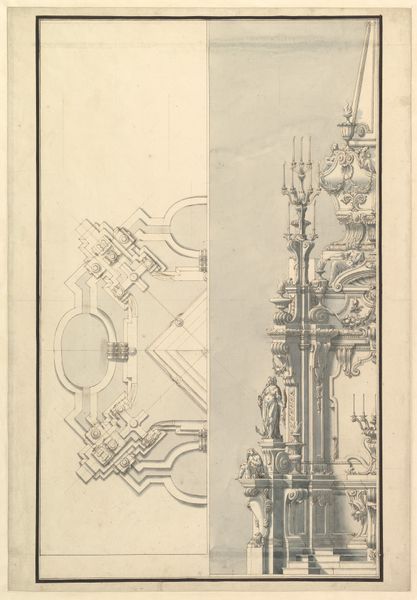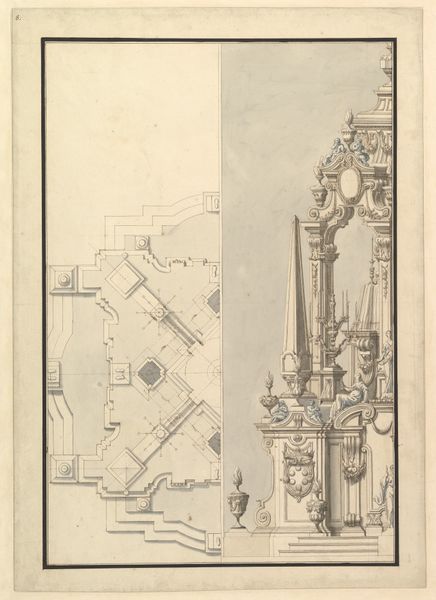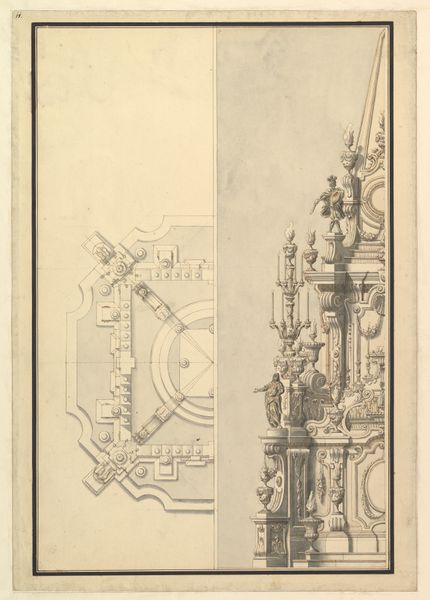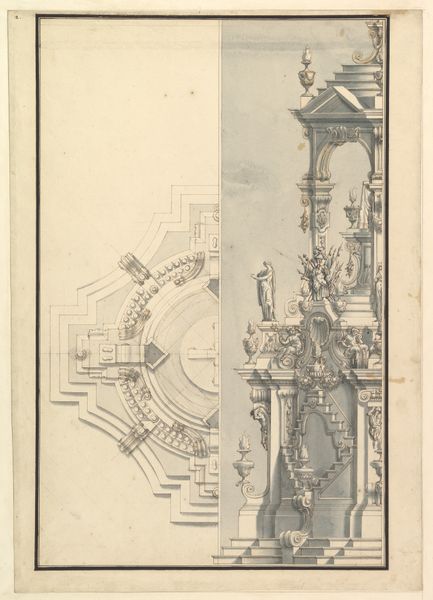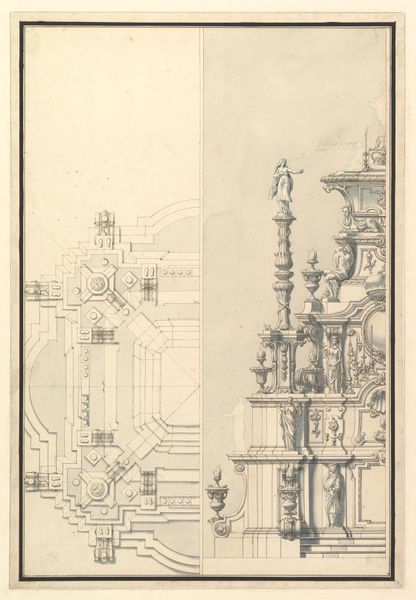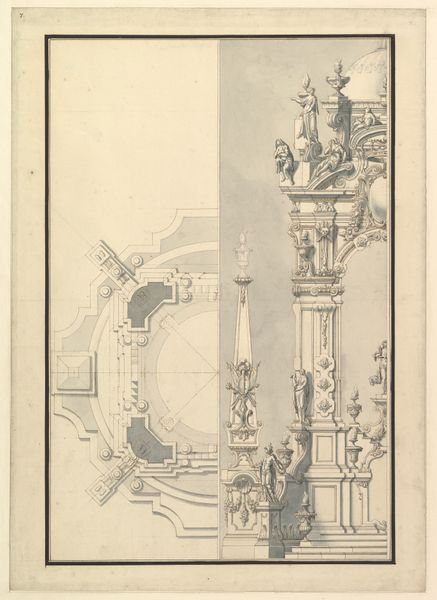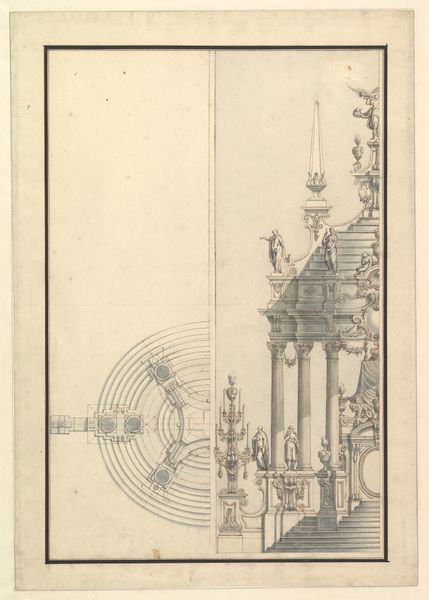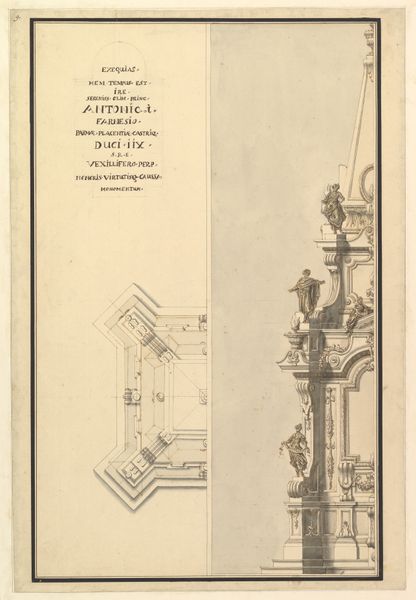
Half Ground Plan, Half elevation for a Catafalque for a Duchess de Berri 1696 - 1756
0:00
0:00
drawing, print, architecture
#
drawing
#
baroque
# print
#
form
#
geometric
#
line
#
architecture
Dimensions: 19-3/8 x 14-13/16 in. (49.2 x 37.6 cm)
Copyright: Public Domain
Curator: Looking at this meticulously crafted drawing, I see echoes of ancient rituals re-imagined for the Baroque era. What are your first thoughts? Editor: There’s an undeniable sense of drama, yet the stark contrast between the technical plan and the florid elevation evokes a certain detachment. This reminds me of how power attempts to aestheticize grief, removing it from lived experience. Curator: Indeed, what we have here is Giuseppe Galli Bibiena's "Half Ground Plan, Half Elevation for a Catafalque for a Duchess de Berri", dating approximately from 1696 to 1756. Bibiena masterfully juxtaposes two perspectives within a single sheet. For the architect, the Catafalque functioned as a poignant reminder of mortality—a temporary architectural setting during a time of remembrance. Editor: And what a potent reminder! The Catafalque itself becomes a stage—the Duchess elevated, quite literally, even in death. I find myself thinking about who gets to be mourned in such splendor and who is relegated to anonymity, their passing unacknowledged. It becomes a meditation on social stratification, where death doesn’t equalize but rather further solidifies existing power structures. Curator: Absolutely. This intersection of architectural representation and performance speaks volumes. Note the symbolic choices embedded in the elevation: the caryatids, the urns, and obelisks each contribute to a larger visual vocabulary concerning power, memory, and ultimately, transcendence. Consider how these elements would function within the dimly lit space of a cathedral. Editor: I also wonder about the artist’s intention, the purpose behind committing such intricate designs to paper. Was this purely academic, or did Bibiena hope for the construction of this grandiose structure? It makes one think about the architectural rendering as a site of utopian possibilities, visions that reflect specific societal desires and values. Curator: Perhaps, it embodies both. It certainly offers a peek into the Baroque obsession with ornamentation. By meticulously capturing not just the structure, but the very atmosphere it would create, Bibiena immortalizes not just the Duchess, but also the entire courtly culture. Editor: For me, Bibiena’s design highlights the contradictions inherent in monuments like these: intended as expressions of grief, they also stand as assertions of enduring power. Curator: A fascinating dialogue between precision and profound meaning, don't you agree? Editor: A powerful collision of technique and social commentary.
Comments
No comments
Be the first to comment and join the conversation on the ultimate creative platform.
